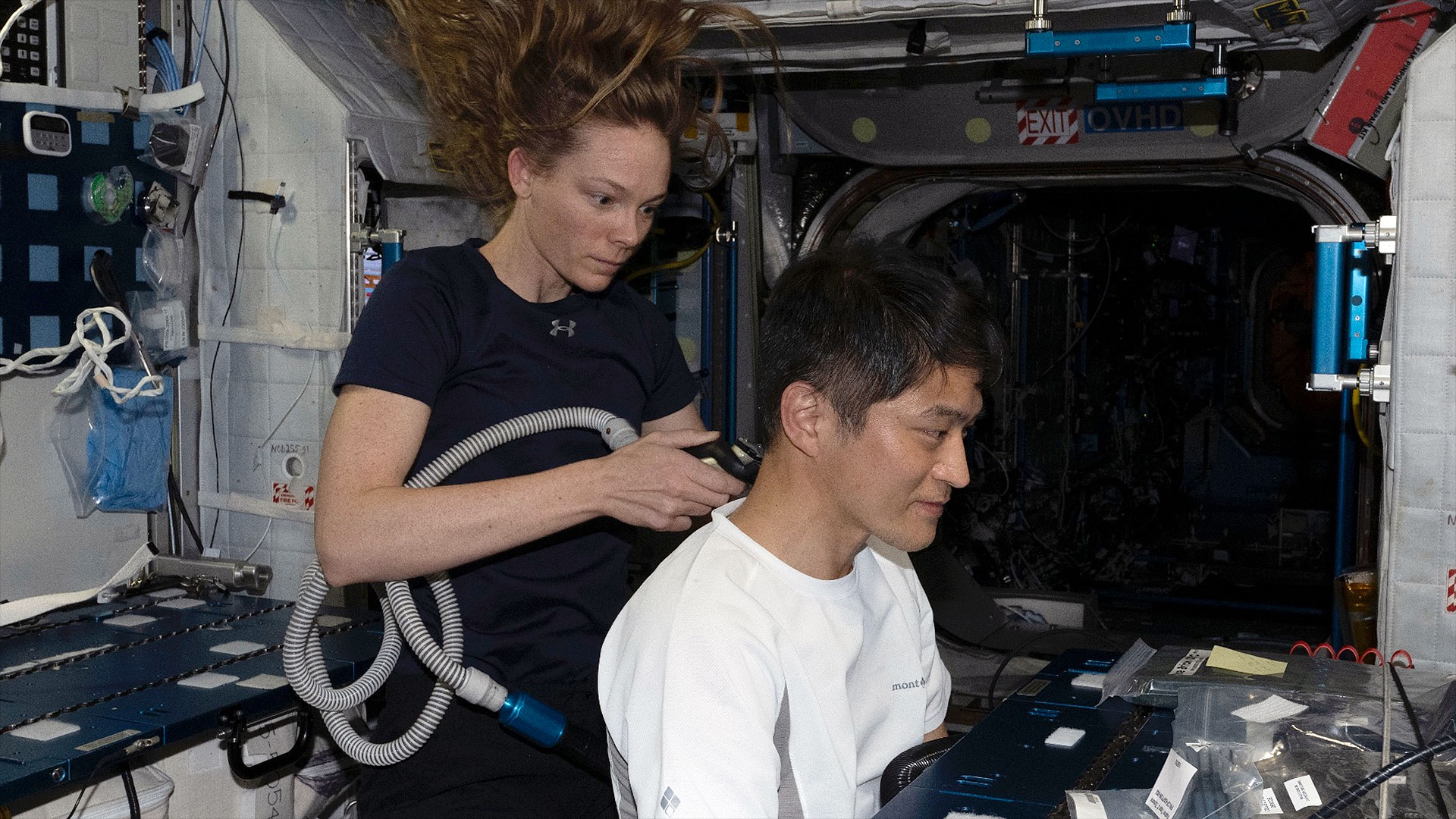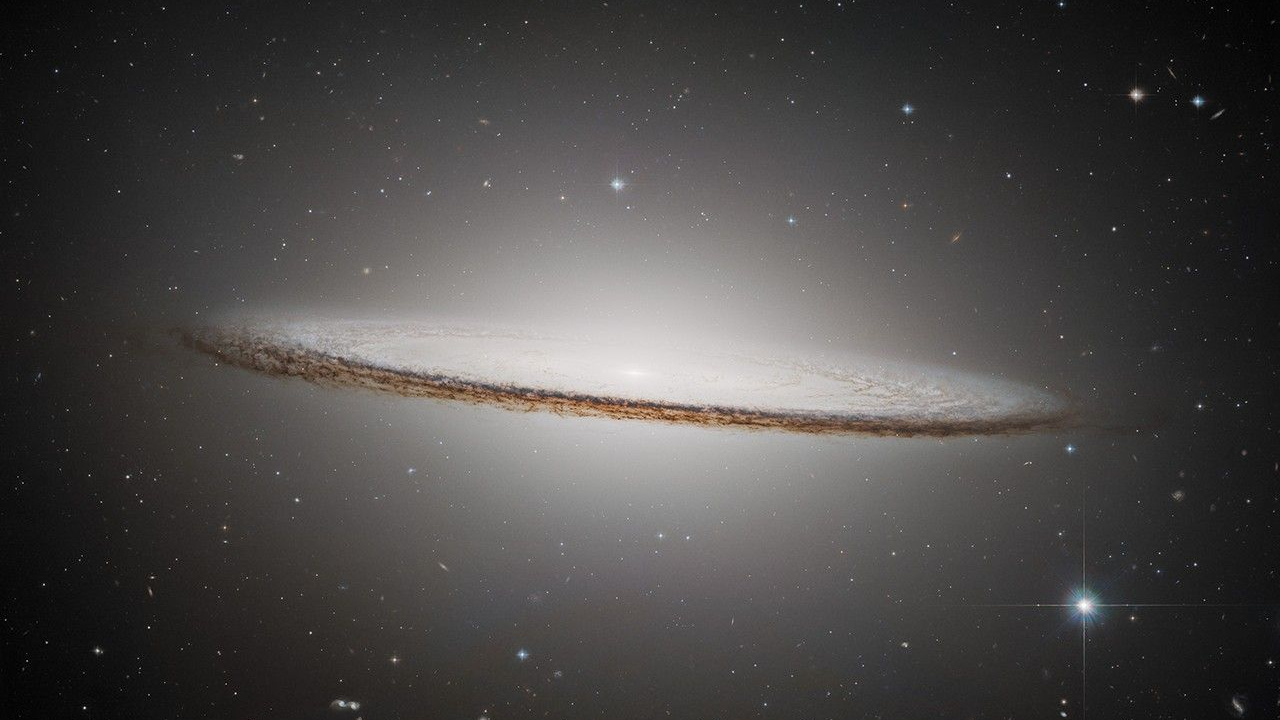Moon-in-a-jar recreates the hazy atmosphere of Titan, Saturn's largest moon

Scientists recreated the unique chemical conditions found on Titan, Saturn's largest moon, in tiny glass cylinders here on Earth, and the experiment revealed previously unknown features of the moon's mineral makeup.
Titan is the second-largest moon in the solar system, behind Jupiter's Ganymede, and sports a dense atmosphere of mostly nitrogen with a dash of methane, according to Space.com. This yellowish haze hovers around minus 290 degrees Fahrenheit (minus 180 degrees Celsius). Below the atmosphere, lakes, seas and rivers of liquid methane and ethane cover Titan's icy crust, particularly near the poles. And similar to liquid water on Earth, these natural gases take part in a cycle in which they evaporate, form clouds and then rain down on the moon's surface.
Titan's dense atmosphere, surface liquid and seasonal weather cycles make the frigid moon somewhat similar to Earth, and like our planet, the moon is known to have organic molecules that contain carbon, hydrogen and oxygen, according to NASA. Because of this organic chemistry taking place on Titan, scientists think the moon could serve as a massive laboratory to study chemical reactions that occurred on Earth before the emergence of life on the planet, Space.com previously reported.
Related: Moon birth and methane weather: Cassini's 7 oddest Saturn finds
But only one spacecraft, Cassini, has observed Saturn and its moons in detail, making it tough to do Earthbound research on the wacky chemistry found on Titan. So recently, a team of scientists set out to simulate Titan in a test tube.
The team first placed liquid water in small glass cylinders and cranked down the temperature to Titan-like conditions, the researchers said in a statement. This water froze to mimic Titan's icy crust. The team then introduced ethane to the tube, which became liquid like the lakes on Titan's surface. Finally, they added nitrogen to stand in for Titan's atmosphere and then varied the temperature of the tube ever so slightly, to simulate the variations in temperature on Titan's surface and in different layers of its atmosphere.
In their recent study, presented Thursday (Aug. 26) at the fall meeting of the American Chemical Society, the team then added two compounds, called acetonitrile (ACN) and propionitrile (PCN). Data from the Cassini mission suggest that these compounds are abundant on Titan, principal investigator Tomče Runčevski, an assistant professor in the Department of Chemistry at Southern Methodist University in Dallas, told Live Science.
Get the Space.com Newsletter
Breaking space news, the latest updates on rocket launches, skywatching events and more!
Most previous studies examined these two compounds separately, in their pure forms, but Runčevski's team wanted to see what would occur when the compounds mixed and mingled, as they might on Titan. As opposed to working with each compound separately, "if you mix them together ... there might be a completely different outcome in structure, so how the molecules will organize, and how the molecules will crystallize," or phase into a solid form, Runčevski said.
And the team found that, when both present in Titan-like conditions, ACN and PCN behave quite differently than either compound in isolation. Namely, the temperatures at which the compounds melted or crystallized shifted drastically, on the order of tens of kelvins (hundreds of degrees Fahrenheit or Celsius).
Related: 6 most likely places for alien life in the solar system
These melting and crystallization points would be relevant in Titan's hazy yellow atmosphere. The various layers of the atmosphere differ in temperature depending on their altitude above the moon's surface, so to understand how chemicals behave throughout the haze, the new study suggests that these temperature variations need to be taken into account, Runčevski said.
In addition, the team found that, when ACN and PCN crystallize, they adopt different crystal structures depending on whether they're alone or in the presence of the other compound. Crystals form when the individual molecules within a compound snap into a highly organized structure. While the building blocks of that structure — the molecules — remain the same, depending on factors such as temperature, they can end up snapping together in slightly different configurations, Runčevski said.
These variations in crystal structure are known as "polymorphs," and when on their own, ACN and PCN adopt one polymorph at high temperatures and another at low temperatures. But "what we notice is that if we have a mixture, the stability of the high-temperature and low-temperature [polymorphs] can be, in a way, switched," Runčevski said.
These fine details of when and how the compounds achieve a stabilized structure "can really change our understanding of what kind of minerals we might encounter on Titan," in terms of what polymorphs they likely adopt on the moon, he said. This in turn can shape what chemical reactions take place between these and other compounds on Titan.
The new study is limited in that it doesn't account for all of the chemicals present on Titan, and so can capture only a simplified picture of what actually happens on the moon, Runčevski said.
"It's important for us as scientists on Earth ... to create these models with increasing complexity, and one day to reach models that are really significant and can really help us further understand the surface of Titan," he said.
NASA's Dragonfly mission, set to launch in 2026 and arrive at Saturn in 2034, may provide more on-the-ground information about the mineral makeup of Titan. However, Runčevski suspects that the crystals his team has observed likely form around the edge of Titan's lakes, cropping up as the liquid ethane in the lakes evaporates and leaves those compounds behind on the shoreline. At this point, it's unclear whether the Dragonfly mission might focus on this specific aspect of the Titanian environment, but "nonetheless, [the mission] is super exciting, and we will learn so much more about Titan," he said.
Originally published on Live Science.
Join our Space Forums to keep talking space on the latest missions, night sky and more! And if you have a news tip, correction or comment, let us know at: community@space.com.

Nicoletta Lanese is a staff writer for Live Science covering health and medicine, along with an assortment of biology, animal, environment and climate stories. She holds degrees in neuroscience and dance from the University of Florida and a graduate certificate in science communication from the University of California, Santa Cruz. Her work has appeared in The Scientist Magazine, Science News, The San Jose Mercury News and Mongabay, among other outlets.










